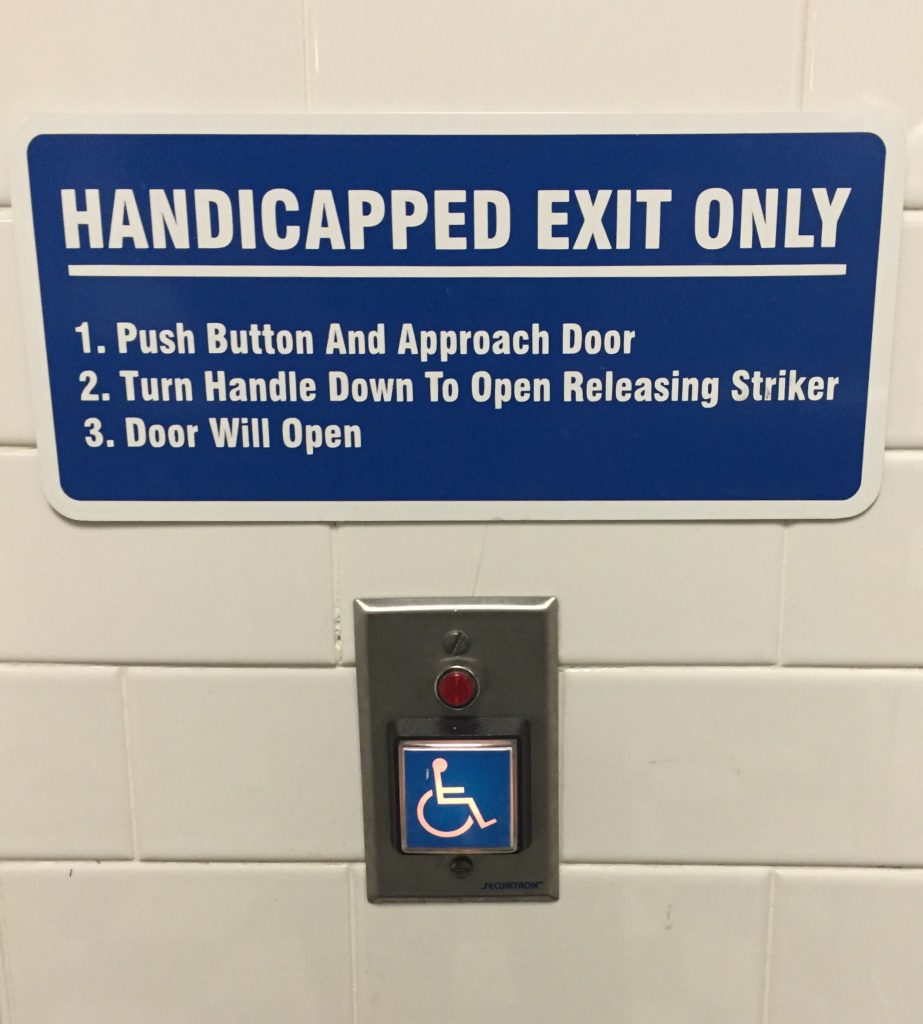If an automatic operator is properly coordinated so the latch is released when the actuator is pressed, only the signage required by the BHMA standard should be needed. Nolan Thrope of Allegion sent me this Fixed-it Friday photo of what happens when somebody misses the coordination meeting. This is an accident waiting to happen.
You need to login or register to bookmark/favorite this content.







“RELEASING STRIKER”
Exactly. Perhaps us door people need to be educated on laymen’s terms.
Someone spent a lot of money making and mounting that nice sign! Too bad they don’t make something to release the striker for you when you press the button.
If they get to the door and turn the handle before it “times out”
I have been doing this for years on my electrically controlled doors. Inside bar will operate normally at all times, but closer motor does not engage. Pushing interior exit button, retracts latchbolt first, then engages operator. On the exterior, the operator is engaged by the actuator Only when the latch is retracted. Thus, the actuator is “enabled” by a card swipe or when the security system has unlocked the door.
This works well but I was told from someone, that the issues that cause us to require this wiring no longer apply because some improvements to the closer clutch. Is that true?
hi have you ever done an article on knobs or levers with knurled or abrasive coating on the handle to signify a hazardous area? this was very popular 10 years ago +/-, but i have not seen this in a specification for a long time.
i remember reading somewhere that this requirement needed to be re-written since the knurling was being specified incorrectly for stairwells (because of falls) or on any door that did not lead to an eggress path (not hazardous, but a dead end).
a friend of mine that has very little vision left also told me that he did not know what a knurled or abrasive coated lever was supposed to signify.
thanks
paul
Hi Paul –
For some reason I didn’t receive a notification of your comment – sorry! I did write an article about this topic: http://idighardware.com/2013/06/q-a-tactile-warning/.
Let me know if this doesn’t answer all of your questions.
– Lori
Totally illogical… and if this is truly an “EXIT”, there should be an electric latch retraction exit device, not a “handle” or “releasing striker”, whatever the heck that means in this case!
What if it’s a blind person. I don’t see any Braille text.
What?? !! ?? Kind of takes the ease and simplicity out of using a power door operator.
I have never heard of a “releasing striker” before this. Is this possibly an electric strike? And if it is, what handle would you be turning down? I agree, this is an accident waiting to happen.
Didn’t LCN make a pneumatic power assist door operator?
Hi Derrick –
Yes – there are some power-assist operators but they don’t open the door as soon as someone manually releases the latch (as the signage states). I don’t think the application in the photo is a power-assist unit, or maybe the signage is incorrect. I’ve only seen power-assist operators in the wild a few times.
– Lori
If the door in question were a fire door and had no other need for an electric striker, what would be the cheapest practical way to add electric-strike capability while retaining the required fire break? If the location were one which would not have been required to have a power-assist operator, but the building owner wanted to make things more convenient for some handicapped guests, would it be better to have the operator and sign, or omit the operator altogether?
In the Northeast U.S. I’ve heard more than a few contractors and installers call latch bolts, strikers.
Often in standard door hardware the latch plate (frame portion)is referred to as the Strike plate as the latch strikes the plate before engaging.. Not to be confused with an electric strike. However in this case I think it’s a timing issue and that the Operator is not coordinated with the electric strike therefore the necessity to turn the handle to gain access or egress .In any case it’s incorrect and should be corrected .